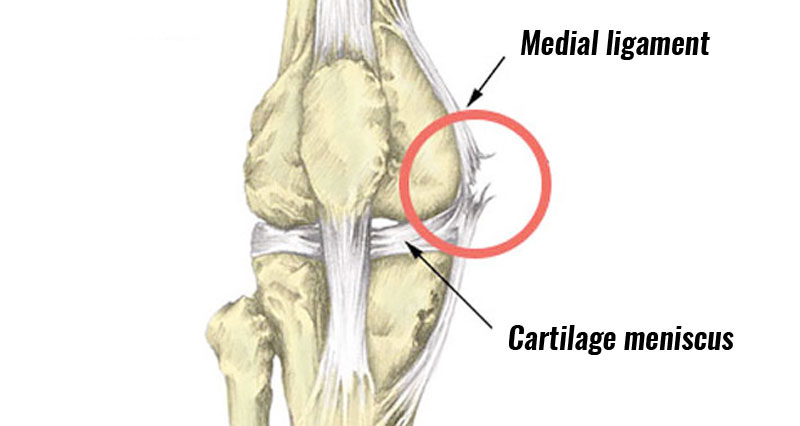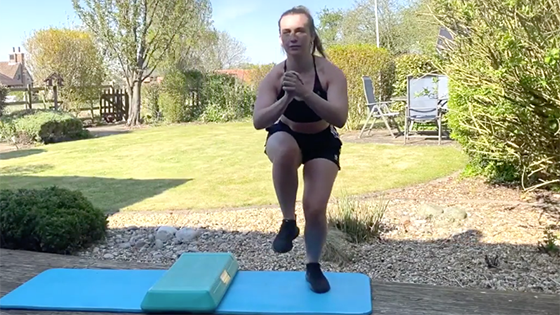MCL SPRAIN REHABILITATION
A Step-by-Step Rehab Program by Elite Level Sports Physiotherapist Paul Tanner.

Struggling with an MCL Sprain?
An MCL sprain causes pain on the inside of the knee and is common in football, rugby, skiing, and other change-of-direction sports. Without structured rehab, the ligament may heal in a weakened state, leaving the knee unstable and prone to repeat injury. Our recovery program is built to solve this. Delivered through our app, it provides daily exercises, step-by-step guidance, and progress tracking — helping you rebuild strength and return to sport with confidence.
Cure My MCL Sprain
Our step-by-step rehabilitation app is designed to fix it – for good!
Why Structured Rehabilitation Is Essential
MCL sprains are common in contact and change-of-direction sports. Many heal without surgery, but incomplete rehab leaves the knee weak and unstable. That raises the risk of repeat injury. Our structured program rebuilds knee stability through clear progressions. It strengthens the quadriceps and hips, improves balance, and restores sport-specific control. Each phase is criteria-based, so you only move forward when your knee is ready. This reduces setbacks and supports a safe return to sport.

Is it suitable for me?
This program is designed for anyone with mild to severe MCL sprains, whether it’s your first injury or a recurring problem. It’s based on the same methods trusted by elite athletes but adapted for everyday use. Progression is criteria-based, so you only move forward when your knee is ready — ensuring safe recovery and reducing the risk of setbacks.
To access the full program, view our subscription plans.
“Trusted by physiotherapists who have worked with Premier League players and England Rugby.”
Program Author
Phil Pask
Phil is one of the world’s most experienced sports physiotherapists. He has worked with the England Senior Rugby Team since 1997, continuing in recent years as Consultant Physiotherapist.
Before that, he spent over 15 years at Northampton Saints as a player, physiotherapist, and Head of Performance, giving him unrivalled expertise at the very highest level of professional sport.

How does it work?
What’s included?
The program includes the following:
Treatment & healing
This covers how and when to apply treatment such as cold therapy & compression, heat, massage, taping & bracing.
Stretching & mobility
These aim to maintain a normal range of movement in the ankle, knee, and hips. They begin early in stage one with simple active ankle movements and gradually progress to more dynamic hip mobility drills.
Activation exercises
These exercises target the hip abductor muscles (located on the outside of the hip). It’s important that these muscles remain active and strong to prepare for the increased demands later in the program.
Strengthening exercises
These exercises focus on maintaining and improving specific muscle strength around the knee joint. They start with simple isometric work and gradually progress to more demanding exercises with heavier loads and unpredictable movements.
Movement control exercises
These are proprioception-type exercises, aimed at improving your balance, control, and spatial awareness. Again, they start with simple balance exercises and progress to advanced balance board movements.
Functional exercises
Functional exercises bridge the gap between basic rehabilitation and sports-specific type drills. They begin with walking drills and progress through skipping-type sprint drills and agility training.
Priority support
If you have any questions about the program or your progress then use in-app support to get in touch with our qualified sports therapist for advice.
Got Questions? We’ve got answers.
How long does an MCL sprain take to heal?
Grade 1 sprains typically heal in 1–3 weeks. Grade 2 injuries take around 4–6 weeks. Grade 3 tears often need 6–12 weeks or longer. Full recovery requires completing a structured rehabilitation program.
What is the best treatment for an MCL sprain?
Early care includes rest, ice, compression, and elevation. Long-term recovery focuses on restoring knee movement, building strength in the quadriceps and hamstrings, and improving balance. The SportsRehab app provides a structured rehabilitation program with daily guidance and physiotherapist-led videos to support safe recovery.
Can you walk with an MCL sprain?
Yes, you can often walk with a mild MCL sprain, though pain or instability may be present. More severe sprains may require a brace or crutches early on.
When can I return to sport after an MCL sprain?
Return to sport after an MCL sprain depends on grade and rehab progress. Many athletes resume training within 6–12 weeks, but only once knee strength and stability are restored.
Do MCL sprains need surgery?
Most MCL sprains do not need surgery. Structured rehabilitation is usually effective, but surgery may be required for severe Grade 3 tears or when other knee ligaments are also damaged.
Want to know more? Visit our full FAQ page for detailed answers about the programs and using sportsrehab.app
“Testimonials”
Best app for sports injury rehab! Everything you need to know (and more) to help you rehab from a plethora of sports injuries. Does exactly what it says on the tin. 5 stars. Thanks

